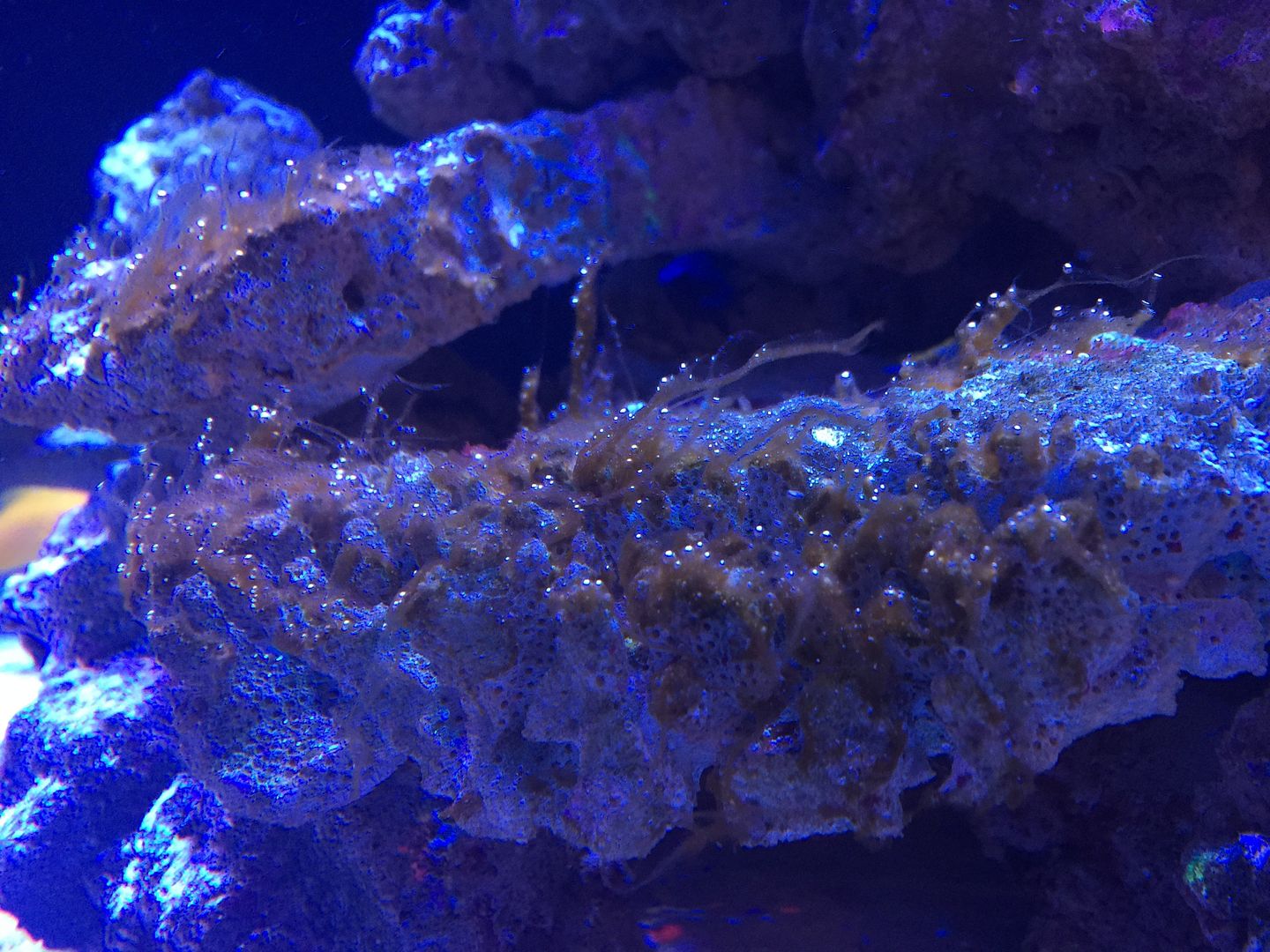That doesn't look like Dinoflagellates to me. Having recently been plagued and (so far) having dealt with them, however I am not an expert and there are many species.
This is what mine looked like (a small sample of what was in the tank):

After speaking with some very helpful (and much more experienced reefers than me), I decided to employ a multi-pronged strategy to defeat them (this was performed in a relatively new tank, with only a few SPS frags) This consisted of the following:
1: Remove:
- Siphon to *waste* all the dinoflagellate mass I could with as little as possible water change (replacement water used TMC Pro Reef synthetic salt to ensure no organics) Do NOT try to pass through a filter sock or floss, they will pass through and re-form.
2: Create a hostile environment:
- 8 Day Total blackout (sump and tank wrapped in black plastic) followed by Blue-only lighting for 5 days before introducing whites gradually
- Maintain very low phosphate and Nitrate (Double Rowa amount, changing every 3/4 days)
- Double carbon media, replacing every 4 days
- Raise pH using Air stone to maintain 8.2+
- Wet Skim and clean it constantly - you need the skimmer at peak efficiency to remove dinos in the water column
3: Outcompete:
Create nutrient competition with good profile of microfauna/flora (Initial 10 x dose of FM Ultra-Bio, followed by daily top-ups of normal dose with UltraBak
Remember: Siphon Dead/Dying Dinoflaggelates to waste!
The reason for removal of as much of the dinoflagellate mass as possible prior to blackout and during is two fold: Firstly, they will break down and provide more free nutrients (you are trying to reduce this). Secondly, even if they are not toxic when growing in the tank (as mine were not), they can release toxins when dying off. I ost two conches who started to feed on an area of dying dinoflagellates on the sand.
The good news is that 6 weeks later, and they have not returned and the tank is (as far as I can tell) free of them.
A word on this approach, however - it is not for the faint hearted. Fortunately for me, I did not have a big stock of SPS. (Hammerheads, Acan, soft corals and LPS were fine).
However in my case, it did trigger a massive issue with the fish stock. As they were in the dark, they retreated to the rock and did not feed. This lowered their immune system and allowed a protozoan infection (probably Crytpocaryon) to take hold (I believe this came into the system on some macroalgae from another reefer previously).
So this method is certainly effective, and much more so than miracle in a bottle chemicals, however some care needs to be taken.